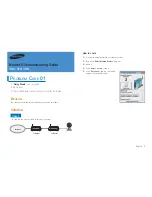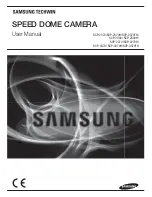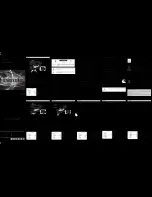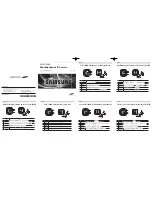
- 65 -
Linux -
Linux is an open source operating system within the UNIX family. Because of its robustness and availability, Linux has won
popularity in the open source community and among commercial application developers.
MAC address (Media Access Control address) -
A MAC address is a unique identifier associated with a piece of networking equipment, or more specifically, its interface with the
network. For example, the network card in a computer has its own MAC address.
Manual iris -
This is the opposite to an autoiris, i.e. the camera iris must be adjusted manually to regulate the amount of light allowed to reach
the image sensor.
Mbit/s (Megabits per second) -
A measure of the bit rate, i.e. the rate at which bits are passing a given point. Commonly used to give the ‘speed’ of a network. A
LAN might run at 10 or 100 Mbit/s. See also Bit rate.
Monitor -
A monitor is very similar to a standard television set, but lacks the electronics to pick up regular television signals.
Motion JPEG -
Motion JPEG is a simple compression/decompression technique for networked video. Latency is low and image quality is
guaranteed, regardless of movement or complexity of the image. Image quality is controlled by adjusting the compression level,
which in turn provides control over the file size, and thereby the bit rate.
High-quality individual images from the Motion JPEG stream are easily extracted. See also JPEG.
Megapixel -
See Pixel.
MPEG (Moving Picture Experts Group) -
The Moving Picture Experts Group develops standards for digital video and audio compression. It operates under the auspices of
the International Organization for Standardization (ISO). The MPEG standards are an evolving series, each designed for a different
purpose.
Network connectivity -
The physical (wired or wireless) and logical (protocol) connection of a computer network or an individual device to a network,
such as the Internet or a LAN.
NTSC (National Television System Committee) -
NTSC is the television and video standard in the United States. NTSC delivers 525 lines at 60 half-frames/second.
PAL (Phase Alternating Line) -
PAL is the dominant television standard in Europe. PAL delivers 625 lines at 50 half-frames/second.
Ping -
Ping is a basic network program used diagnostically to check the status of a network host or device. Ping can be used to see if a
particular network address (IP address or host name) is occupied or not, or if the host at that address is responding normally. Ping
can be run from e.g. the Windows Command prompt or the command line in UNIX.
Pixel -
A pixel is one of the many tiny dots that make up a digital image. The color and intensity of each pixel represents a tiny area of the
complete image.
PoE (Power over Ethernet) -
Power over Ethernet provides power to a network device via the same cable as used for the network connection. This is very
useful for IP-Surveillance and remote monitoring applications in places where it may be too impractical or expensive to power the
device from a power outlet.
PPP (Point-to-Point Protocol) -
A protocol that uses a serial interface for communication between two network devices. For example, a PC connected by a phone
line to a server.





































